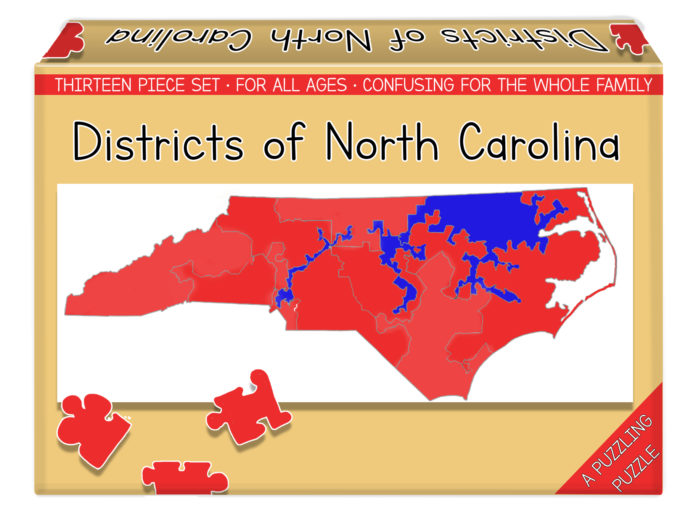When election day comes around, and we pile into our local community centers and school auditoriums to cast our vote, we like to believe that our vote matters. We like to believe we are fulfilling our civic duties and making our voices heard in government. A recent federal court decision in North Carolina works to ensure that this essential element of our democratic republic functions fairly and equitably.
Last week, federal judges found North Carolina’s congressional districts map unconstitutional, claiming the map was formed as a result of gerrymandering. Gerrymandering is the technical political term referring to the illegal act of dividing territory into election districts in a way that gives advantage to one political party over another. The unconstitutionality of this act was best explained by former President Barack Obama in his 2016 State of the Union Address –– “We have to end the practice of drawing our congressional districts so that politicians can pick their voters, and not the other way around.”
Clearly, gerrymandering is wrong. It not only gives one party an advantage over its opposition, but also takes away the voter’s autonomy. If a Democrat happens to reside in a territory that has systematically contorted borders to assure Republican victory, their basic fundamental right to vote has been compromised.
In the case of North Carolina, Republican lawmakers hired a consultant to draw their election districts after the most recent census. The consultant later testified to a conscious intention by Republican legislators “to minimize the number of districts in which Democrats would have an opportunity to elect a Democratic candidate.”
North Carolina’s gerrymandering proved effective in 2016 when Republicans won 53 percent of the vote but took 77 percent of the state’s congressional seats. A close look at the congressional district boundaries in North Carolina as compared to their presidential election votes shows a calculated effort to give Democrats less influence in certain districts by containing voters. In this way, having districts drawn such that you contain most blue voters to a measly three out of 13 districts means they will have less influence in the other districts. Because of this, Democrats would only have the possibility of securing a vote in those three districts rather than being dispersed in a way that gives them potential throughout the entire state.
Judge James A. Wynn Jr., who presided over the case, claimed that the current election district maps “violated the 14th Amendment’s guarantee of equal protection.”
Although, according to the New York Times, this court decision marks “the first time that a federal court had blocked a congressional map because of a partisan gerrymander,” North Carolina’s Republicans aren’t the only politicians guilty of gerrymandering. Pending court cases regarding Wisconsin and Maryland, of which the latter’s Democrats benefit from congressional map drawing, reveal a systematic tendency to draw unfair election districts that benefit one party over another.
Likewise, Texas is also widely considered to be guilty of gerrymandering. In fact, the state’s district maps have been cause for legal concern since they were drawn up after the 2010 census, according to the Houston Chronicle. Usually under scrutiny for racially discriminatory gerrymandering set out to disenfranchise minority voters, Texas congressional districts were also brought before the Supreme Court recently by Texas Democrats, whose appeal was dismissed this week, according to the San Antonio Express News. Because of this, the existing maps will be used in the Texas primary elections this March.
The court also ruled that North Carolina’s legislature must draw a new congressional district map by Jan. 24. This means that the new, more fair districts would be used in the midterm elections later this year. Likewise, this decision could influence the judges’ ruling over the other aforementioned pending court cases to suggest a speedy rewrite of congressional districts before midterm elections.
So, what is the most fair way to go about creating election districts? Some states choose to hire a neutral third party consultant to draw their districts, as is the case in California. Other states choose to utilize map drawing software that can promote fair territories drawn based on geography rather than political leanings. Each of these options can bring its own set of issues, but still offer a better alternative to partisan gerrymandering. In the case of North Carolina, the court said it “would institute its own map if it finds the new district lines unsatisfactory,” according to the New York Times.
The United States was founded as a democratic republic, meaning our elected officials should be elected by the people. Gerrymandering practices like those seen in North Carolina cannot continue to be accepted by citizens and courts, regardless of which side they benefit. The court decision regarding North Carolina’s congressional districts is a wake-up call that will hopefully lead to positive change, reform and legal standards across the board –– clean up your maps and give the voting power back to the people.






